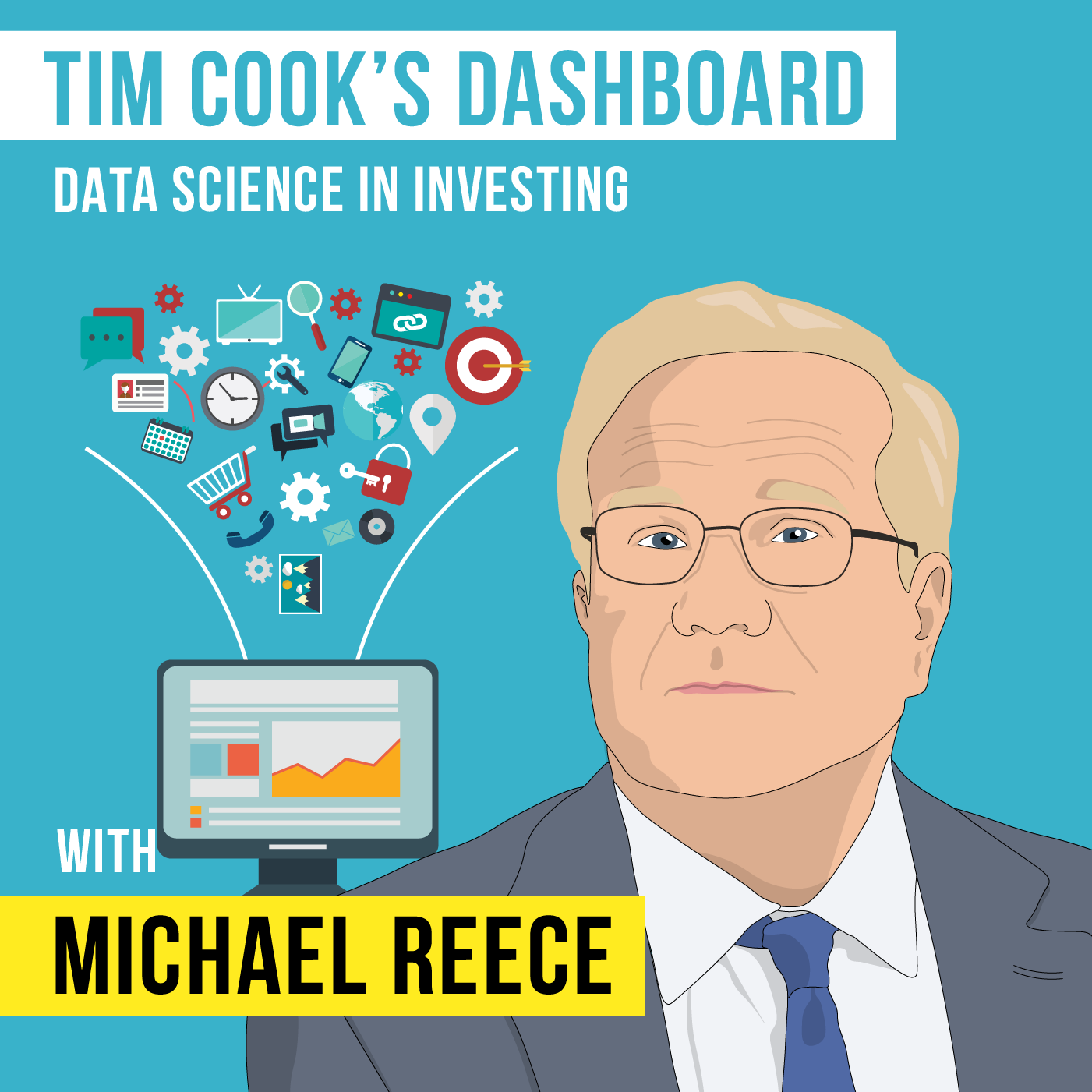
My guest this week is Michael Reece, the chief data scientist for Neuberger Berman. The topic of our conversation is the use of data in the investment process, to help cultivate what is commonly referred to as an information edge.
I call the episode “Tim Cook’s Dashboard” because of an interesting question that Michael poses: if you armed the best apple analyst in the world with Tim Cook’s private business dashboard, what might that be worth? Effectively Michael’s goal is to recreate the equivalent of a company dashboard for many businesses, helping analysts understand the fundamental health and direction of companies a bit better than the market does, and in so doing create an actionable edge.
This is a daunting task, and you will hear why. It requires both a fundamental understanding of business and of data, statistics, and methods like machine learning. In our own work, we’ve found machine learning to be useless for predicting future stock prices, but extremely useful for other things, like extracting and classifying data.
This conversation can get wonky at times, but as listeners know that is the best kind of conversation, even if it requires a second, slower listen. I hope you enjoy this talk with Michael Reece. Afterwards, I highly recommend you invest the time to read a series of posts called Machine Learning for Humans, which I will link to in the show notes. It helps demystify the buzz words and explain how these new technologies are being used.
Show Notes
2:44 - (First Question) – Changes in data science through the lens of Michael’s career
5:17 – The basic overview of using data and machine learning to create an edge
6:58 – How the state of business is more than just a single data point
7:53 – How you know when you’ve pulled a real signal from the noise of data
10:49 – The advantages that data provides
13:01 – Is there still an edge in decaying data
15:34 – Building data that would predict stock prices
19:43 – Prospectors vs miners in data mining
22:18 – Knowing when your prospectors are on to truth
27:09 – Understanding machine learning
30:10 – Defining partition
32:17 – Applying the parameters of selection process to stocks
36:05 – What’s the first step people could take to use data and machine learning to improve their investment process
38:54 – Building a sustainable advantage within data science
41:35 – Predicting the uncapped positive vs what’s seemingly easier, eliminating the negative
43:58 – How do we know to stop using a signal
46:22 – The importance of asking the right question
47:09 – Categories of objective functions that are interesting to measure data against
47:42- Crossing the Chasm
48:37 – Most exciting things he’s found with data
51:17 – What investors, individual or firms, has impressed him most with their use of data
52:17 – Will everyone eventually shift to being data informed or data driven
55:33 – Wall Street’s use of data vs other industries
55:36 – Sam Hinkie Podcast Episode
57:48 – Why everyone should know how to code
58:52 – Kindest thing anyone has done for Michael
59:22 – One Two Three Infinity
/rating_on.png)
/rating_half.png)
Patrick - Long time lister first time caller. Great podcast.
I was hoping Michael had gone deeper into the advice for “non-technical” PM’s. (36:05 – What’s the first step people could take to use data and machine learning to improve their investment process). Specifically, how do I sharpen the sword (R, Python, SAS, etc) and what is a recommended way to sharpen it (traditional school, coursea, etc)? Specific recommendations would be greatly appreciated.
Thanks and keep up the good work.
MP
Thanks for this podcast. I have been an equity research analyst for more than a decade and have recently developed a strong interest in data science & machine learning. However, I have been somewhat skeptical of alternative data based approaches till now because I thought they could only be used to make educated guesses on how the current or most recent quarter went for a business.The idea that Michael has explained here that alternative data driven approaches could be used to create a granular model for the business is new and suggests it could be useful for longer term analysis. From what I have read and heard, however, it seems such methods are more likely to succeed in sectors closer to the retail customer and not to verticals like banking or industrials, etc.. Will be happy to be proven wrong though..